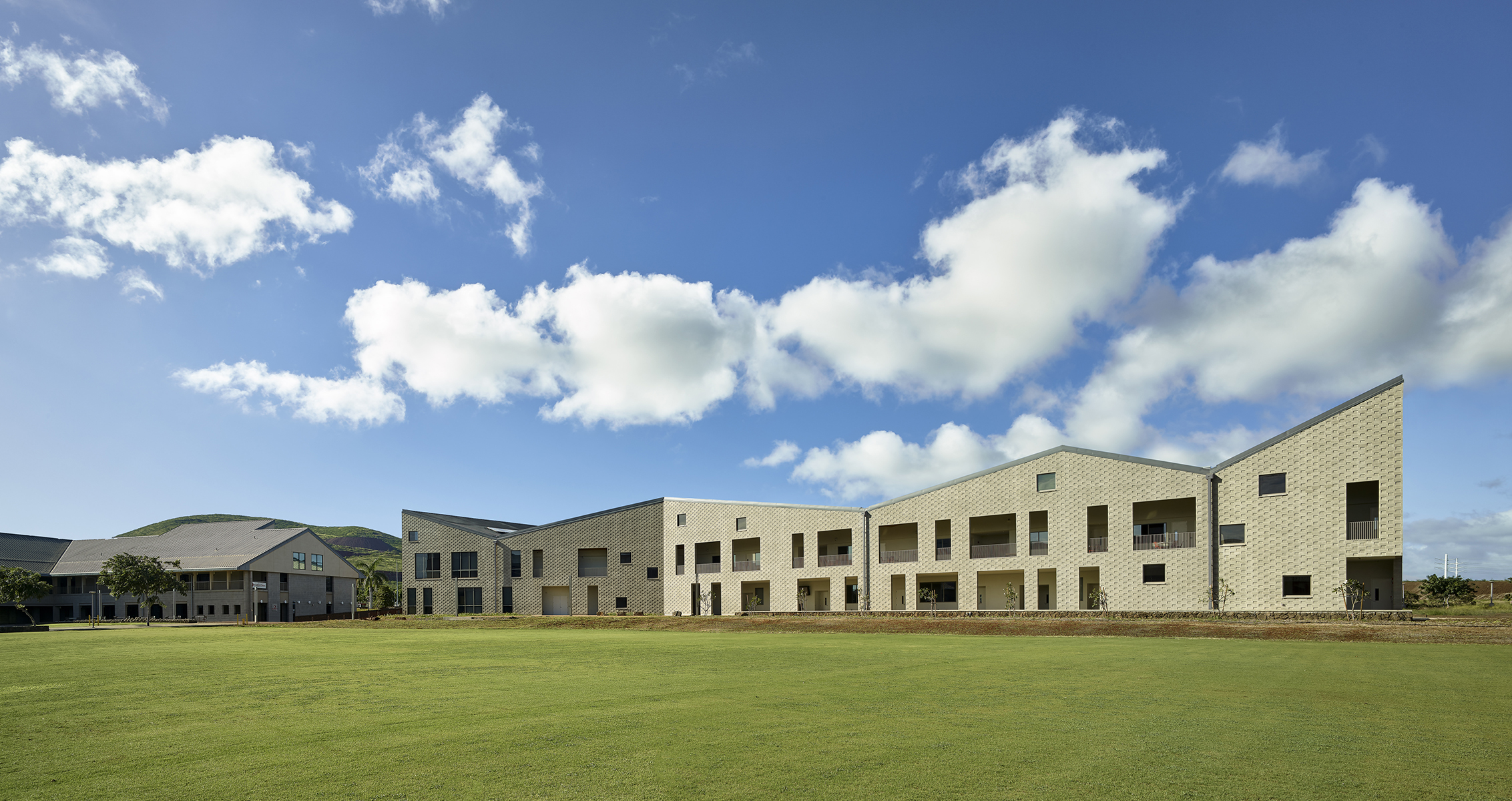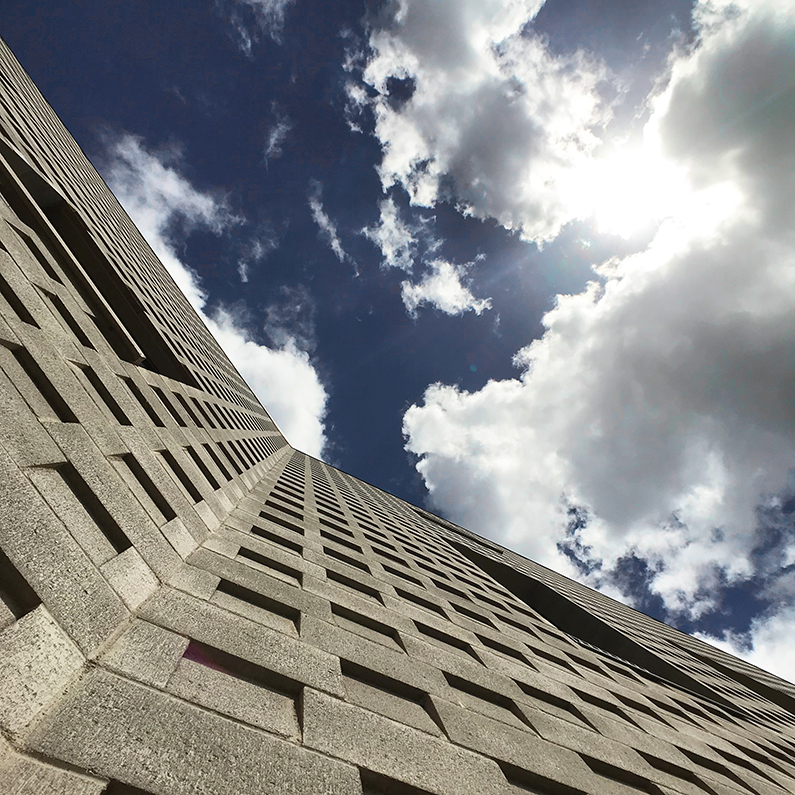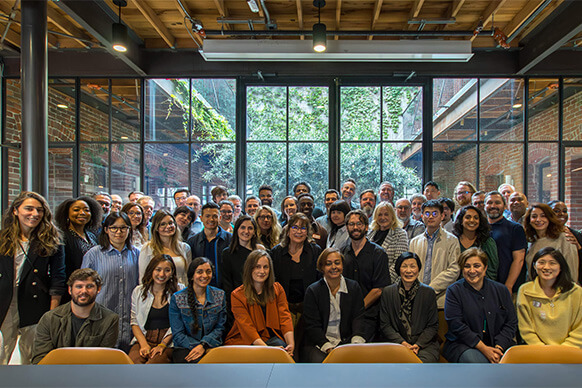Aloha Kakou,
The American Institute of Architects (AIA) Honolulu Chapter recently awarded the University of Hawaii West Oahu Administration and Health Sciences Building (AHSB) three awards at its annual event: The Mayor’s Choice Award, the new Distinctive Detail Award, and the Award of Excellence (Institutional).
The recently constructed AHSB is the final building of the Phase I buildout at the University of Hawaii West Oahu after 13 years of planning and design. Located west of Pearl Harbor, the campus is built on former sugar cane land with a legacy of >100 years of agriculture. Decades of sustained tilling depleted organic matter in the topsoil decreasing the ability to retain water and support new plant life. The team developed an approach to restore, heal, and rebuild the topsoil through nitrogen-fixing planting and implemented a comprehensive onsite water management program through rainwater catchment tanks, bioretention/rain gardens, and greywater demonstration gardens.
AHSB combines two distinct programmatic elements that are connected by a two-story +200’ long x 18’ deep outdoor lanai (balcony). This linear gathering space facing the Great Lawn expands learning environments for both teaching labs on one and classrooms on two. While the Administration is positioned at the mauka (mountain) entry and greets those arriving, Health Sciences is located on the makai (sea) end and completes the northern edge of the lawn placing students in the heart of the campus.
With the original campus inspired by former sugar mills from the Ewa plains, the team was intrigued by the additive nature of this historic building type. An approach to utilize sloped volumes that were ‘ganged’ together created a unique yet familiar form, while kapa (Hawaiian bark cloth) influenced the development of a custom CMU pattern and texture that envelopes the entire facility. Designated as a ‘Landmark Building’ due to its program and location by the Administration, the project aspired to complement the spirit and vocabulary of the campus through its siting, materiality, and form.
Mahalo Nui Loa.



